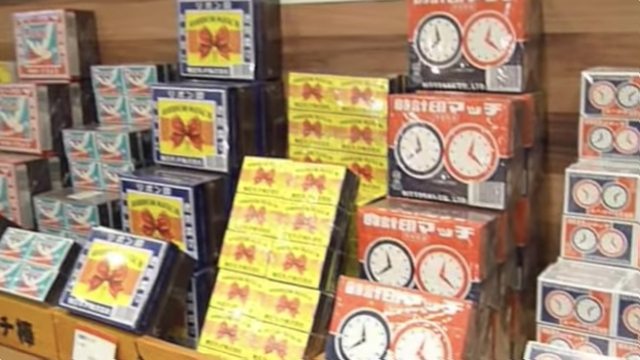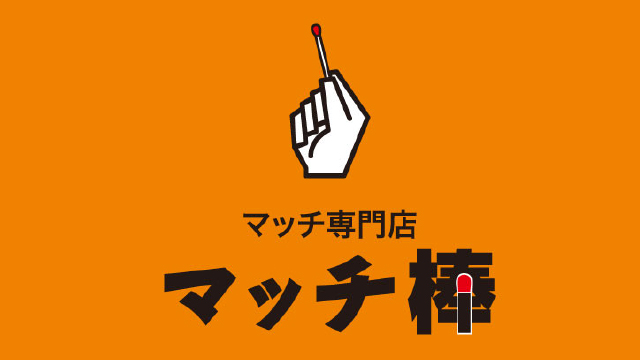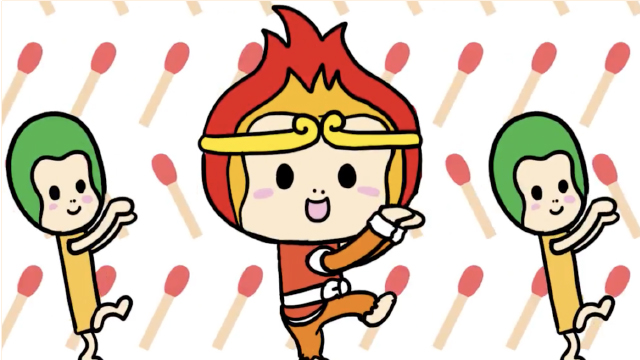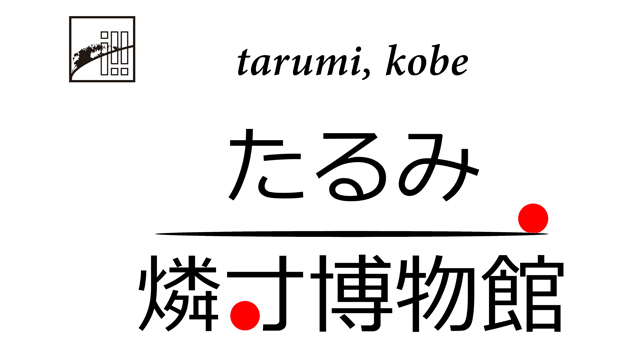Hsitroy of Matches
HOME > Virtual Museum > Hsitroy of Matches
- 1827 (Bunsei 10)
- John Walker, an English pharmacist, invents "Friction Lights" and started to sell as "Walker Match."
- 1831 (Tenpo 2)
- Charles Saurir, a French Chemist, invents "Yellow Phosphorous Match."
- 1855 (Ansei 2)
- Johan Edvard Lundstrom of Jonkoping in Sweden invents "Swedish Safety Match" and he acquires patent right of it.
- 1865 (Keio 1)
- Bryant & May Co., Ltd in U.K. starts to manufacture and sell "Safety Match."
- 1869 (Meiji 2)
- G. Lemoine in France discovers "phosphorus sulphide."
- 1875 (Meiji 8)
- Production of Yellow phosphorus matches is banned in Denmark.
- 1875 (Meiji 8)
- Makoto Shimizu succeeds to make trial matches at temporary factory built in Tomomi Yoshii’s second house in Mitamikunimachi in Shiba, Tokyo.
- 1876 (Meiji 9)
- Hekisui Fukuyama, famous match label collector, was born in Tsunahamamura, Kamidogun, Okayama. His nickname was "Teijiro."
- 1876 (Meiji 9)
- Makoto Shimizu establishes a company named "Shinsuisha" in Honsho-yanagihara, Tokyo and starts manufacturing of "Yellow Phosphorus Match."
- 1878 (Meiji 11)
- Matches made by Shinsuisha are first exported to Shanghai in China. The first exporting amount is 24,000 yen.
- 1879 (Meiji 12)
- Production of Yellow phosphorus matches is banned in Sweden.
- 1879 (Meiji 12)
- Makoto Shimizu visits Jonkoping Co. in Sweden to learn manufacturing methods, etc. After he comes back to Japan, he starts to manufacture "safety match."
- 1880 (Meiji 13)
- Importing of overseas’ matches is restricted, and importing amount decreases dramatically to 1660 yen.
- 1880 (Meiji 13)
- Benzo Takigawa in Kobe establishes a company named "Seisuisha."
- 1880 (Meiji 13)
- Teijiro Inoue in Osaka establishes a company named "Kouekisha."
- 1884 (Meiji 17)
- Exporting of matches goes down dramatically, which affects match business to become seriously slow. Exporting amount is noticeably the lowest in this year.
- 1884 (Meiji 17)
- Regulation of trademark is enacted on October 1st for the first time in Japan.
- 1885 (Meiji 18)
- Toxicity of yellow phosphorus results in social problems, so production of yellow phosphorus matches is temporarily stopped.
- 1885 (Meiji 18)
- According to the trademark regulation, "Crouching Lion" by Seisuisha is first registered as match label design of No. 321 on June 20th.
- 1886 (Meiji 19)
- Ginbei Hata in Kobe establishes match company named "Hata Match Factory."
- 1887 (Meiji 20)
- Masanosuke Naoki in Kobe establishes match company named "Shikakusha."
- 1887 (Meiji 20)
- Economy of match industry finally passes through the sluggish stage.
- 1888 (Meiji 21)
- Shinsuisha goes bankrupt. Makoto Shimizu goes to Kanazawa to live the life of a recluse.
- 1890 (Meiji 23)
- Riki Sato follows Makoto Shimizu on the business and reopens Shinsuisha in Fukagawa, Tokyo.
- 1890 (Meiji 23)
- "Yellow Phosphorus Match" is permitted to start production in Japan.
- 1893 (Meiji 26)
- Nippon Yusen begins the sea route to Bombay, so matches are exported directly to India from Japan.
- 1894 (Meiji 27)
- Nisshin War (Sino-Japanese war) starts.
- 1896 (Meiji 29)
- Naoki matches are first exported to Singapore with association of Mitsui Bussan. This is the first experience for a Japanese company to export Japan made matches.
- 1897 (Meiji 30)
- Benzo Takigawa merges another company named "Ryosuisha" and establishes a new firm, "Ryosui Partnership Company." He buys the company for 120,000 yen, including the trademark of "Long Tail Chicken" which is 50,000 yen.
- 1897 (Meiji 30)
- Makoto Shimizu petitions for building of a match factory called "kyokusuikan" in Amagasaki City, and also acquires the patent right of match making machine (Shinrinsunjikuhairetsuki).
- 1899 (Meiji 32)
- Makoto Shimizu passed away on February 8th. He was 53 years old. Memorial statue is built in August in the precincts of Kameido Tenjin Shrine, Tokyo to praise his achievements.
- 1900 (Meiji 33)
- Sadajiro Inoue of Koekisha, Osaka invents new match named "thin-stick match." Before one box of safety match contained about 60 sticks, but his invention enables the box to contain 100 – 120 sticks.
- 1903 (Meiji 36)
- Collectors’ club named "Rinshikinshukai" is founded by Hekisui Fukuyama, Icchousai Yanagawa, Katsura Bunraku, and Chuto Hayakawa. Then the first meeting is held on November 24th.
- 1904 (Meiji 37)
- Prohibition Treaty of Manufacturing Yellow Phosphorus Match is concluded at the "International Meeting For Workers Protection." But Japan does not sign the treaty.
- 1904 (Meiji 37)
- Nichiro War (Russia – Japan war) starts.
- 1904 (Meiji 37)
- Tobacco business is decided as government monopoly on July 1st. Commercial tobacco totally disappears.
- 1907 (Meiji 40)
- Allying with Mitsui Bussan, "Japan Match Manufacturing Company" is established by Seinosuke Naoki and Yoshitomo Honda, who then are appointed as major directors of the company.
- 1907 (Meiji 40)
- Hekisui Fukushima holds "Japan Rinshikinshukai’s Match Label Exhibition" on March 25th at the Chuo Newspaper’s Home Building, resting house during the Tokyo Kangyo Exposition.
- 1914 (Taisho 3)
- World War I starts.
- 1916 (Taisho 5)
- Benzo Takigawa reestablishes "Takigawa Match Co., Inc." uniting Seisuisha and Ryosuisha, both of which he had been operating.
- 1917 (Taisho 6)
- Takigawa Match Co., Inc. associates with Suzuki Store and reforms the company. The new company is called "Toyo Match Co., Inc."
- 1918 (Taisho 7)
- Teikoku Match Co., Inc. is established. 15 match companies in Osaka area join in the affiliation.
- 1918 (Taisho 7)
- Five companies of Japan Kamijiku Seizo Match, Isayama Match, Azuma Match, Yamada Match and Koekisha integrate business into new company called Chuo Match Co., Inc.
- 1919 (Taisho 8)
- Export of matches reaches to the highest point and the amount is more than 40 million yen: precisely 41.98 million yen.
- 1920 (Taisho 9)
- Match Collectors’ bulletin book named "Nishiki" is first published by Japan Rinshikinshukai on November 27th.
- 1922 (Taisho 11)
- Prohibition Treaty of yellow phosphorus match production is internationally agreed at the Washington International Labor Conference.
- 1922 (Taisho 11)
- Production of yellow phosphorus matches and its exporting are prohibited.
- 1923 (Taisho 12)
- All of yellow phosphorus match factories in Osaka and Nagoya go bankrupt, since the production of yellow phosphorus matches is banned.
- 1923 (Taisho 12)
- Outbreak of big earthquake in Kanto area.
- 1924 (Taisho 13)
- The first meeting of Kansai Match Label Study and Match Label Exhibition is held at Shirokiya-gofukuten (kimono store) in Osaka, Sakaisuji between August 25 – 27.
- 1925 (Taisho 14)
- Benzo Takigawa, the match tycoon in Japan passed away on January 12. He was 73 years old.
- 1926 (Taisho 15)
- "Match Label Exhibition" is held by Commercial Match Label Collectors and Japan Rinshikinshukai from January 17th to 23rd at Matsuya Department Store in Ginza.
- 1926 (Taisho 15)
- The First Match Label Exhibition by Advertising Match Label Association of Kobe is held at Shinkaichi Kobe Department Store in Kobe, Minatogawa between February 10 – 14.
- 1926 (Taisho 15)
- To celebrate 10th Anniversary of Osaka Match Label Club, Match Label Hobby Exhibition is held at Takarazuka Shin Onsen (New Spa) in Osaka between February 19 – 23.
- 1926 (Taisho 15)
- Hobby Party of Collected Items’ Exhibition is held in March at Matsuzakaya Department Store in Nagoya.
- 1926 (Taisho 15)
- No. 2 Match Label Exhibition is held by Kansai Label Study Association between August 28th – 30th at Shirokiya Gofukuten (Kimono Store) in Osaka Sakaisuji.
- 1927 (Showa 2)
- "Daido Match Co., Inc." is established by Sweden Match Trust by reorganizing Toyo Match and Koekisha, which is partly owned by a Swedish company.
- 1927 (Showa 2)
- "Asahi Match Co., Inc." is also established by Sweden Match Trust by uniting Isayama Match and Kamata Match Company.
- 1927 (Showa 2)
- The entire amount of Hekisui Fukuyama’s label collection reaches to 200,000 items.
- 1928 (Showa 3)
- Daido Match Co., Inc. and Asahi Match Co., Inc., both are partially owned by Swedish Company, occupy 70% of the match market in Japan.
- 1928 (Showa 3)
- Chinese movement of "elimination of Japanese currency" arises and amount of match export falls.
- 1929 (Show 4)
- Grand Exhibition of Match Labels is held at Shinbashi Theater in Tokyo during performance of play, “Match,” from June 1 to June 23.
- 1929 (Show 4)
- "Exhibition of Hobby Designs and Match Labels" is held at Matsuzakaya Department Store in Nagoya from August 14th to 18th.
- 1929 (Show 4)
- Stock prices go downturn drastically and world economic woes begin in October.
- 1930 (Showa 5)
- Sweden Match Trust led by Kruger acquires match monopoly in 25 countries in the world.
- 1930 (Showa 5)
- "Exhibition of Hobby Design Match Labels" is held by "Society of Various Hobbies" at Matsuzakaya Department Store in Osaka from February 21st to 26th.
- 1930 (Showa 5)
- All Japan Exhibition of Match Labels is held by Japan Rinshikinshukai at Matsuzakaya Department Store in Ueno, Tokyo from August 26th to 31st.
- 1932 (Showa 7)
- Affected by European economical downturn, Sweden Match is encumbered, and Kruger, the owner, commits suicide.
- 1932 (Showa 7)
- Losing back up of Swedish capital, Daido Match Co., Inc. is merged by Hisahara Konzern (Japan company group), led by Yoshisuke Ayukawa, to launch a new business venture.
- 1932 (Showa 7)
- Match export to the U.S.A. prospers surprisingly.
- 1934 (Showa 9)
- Hekisui Fukuyama passed away on March 3. He was 57 years old.
- 1934 (Showa 9)
- Memorial statue of Hekisui Fukuyama is built in the precincts of Kameido Shrine on September 26th.
- 1935 (Showa 10)
- Advertising matches and premium matches successfully thrive in the market.
- 1937 (Showa 12)
- Publication of members’ booklet, "Nishiki" is discontinued on April 25th. No. 83 was the last issue.
- 1939 (Showa 14)
- Daido Match Co., Inc. is integrated into Nissan Agriculture and Forestry Industry.
- 1939 (Showa 14)
- Outbreak of the World War II.
- 1940 (Showa 15)
- Match allowance system is regulated.
- 1941 (Showa 16)
- Ticket distribution system of match, sugar, flour, and salad oil is determined.
- 1941 (Showa 16)
- Outbreak of the Pacific War.
- 1945 (Showa 20)
- Most of match factories in Japan are burnt down by attacks of U.S. Air force.
- 1945 (Showa 20)
- The World War II ends.
- 1948 (Showa 23)
- Match allowance system is demolished. Economic freedom of match sales is restored. Number of match factories increase from 50 to 158.
- 1950 (Showa 25)
- Outbreak of Korean War activates Japan’s economy to be buoyant.
- 1953 (Showa 28)
- JIS (Japanese Industrial Standards) of safety match is stipulated.
- 1956 (Showa 31)
- Starting around this year, matchbox changes from wooden-made to paper-made. Customization of matches begins.
- 1960 (Showa 35)
- Trademark Regulation named "Showa 35 Rule" is enforced. The copyright life of trademark is shortened from 20 years to 10 years.
- 1960 (Showa 35)
- Demand of advertising matches increases, and its production reaches to 39% of whole production.
- 1973 (Showa 48)
- Production of matches reaches to 800,000 tons for the first time after the war, including exported matches of 18,000 tons.
- 1975 (Showa 50)
- Memorial statue of Makoto Shimizu, which was damaged during the war, is rebuilt in the precincts of Kameido Tenjin Shrine. Also Makoto Shimizu’s honorable monument is newly built.
- 1986 (Showa 61)
- "Monument of Match Origin in Japan" is built at Ryougoku High School in Sumidaku, Tokyo, where match factory of Shinsuisha was once built and operated by Makoto Shimizu.
- 1994 (Heisei 6)
- Teiichi Yoshizawa, who Guinness Book of World Records described as the No. 1 match label collector in the world, passed away. He was 90 years old.
- 1995 (Heisei 7)
- Outbreak of strong earthquake in Hanshin and Awaji region.
- 1995 (Heisei 7)
- Match Label Exhibition: "History of Modern Time and Present Time learning from items in pockets" is held at Tobacco & Salt Museum in Shibuya, Tokyo from September 9th to October 15th.
- 2002 (Heisei 14)
- "Match Label Graphic Exhibition," by MOTS Gallery Creation is held at Morisawa, Iidabashi, Tokyo from January 15th to March 29th.
- 2002 (Heisei 14)
- "Classic Label Art Exhibition" is held in Himeji from October 1st to 6th.
- 2002 (Heisei 14)
- "Match Exhibition 2002" is held in Osaka from December 19th to 21st.
- 2004 (Heisei 16)
- "The World Of Match Labels, Designs Learning From Things In Pocket" is held at Tobacco and Salt Museum in Shibuya, Tokyo from October 30th to January 10th, 2005.
- 2005 (Heisei 17)
- The 130th Anniversary of Match Manufacturing in Japan.
- 2005 (Heisei 17)
- "Grand Exhibition of Match Labels" is held at Okayama Prefecture’s Museum from April 26th to May 29th.
- 2005 (Heisei 17)
- "The World Of Match Art: Match Label Nostalgic Exhibition" is held at Matsuzakaya Department Store in Nagoya from May 4th to 16th.




